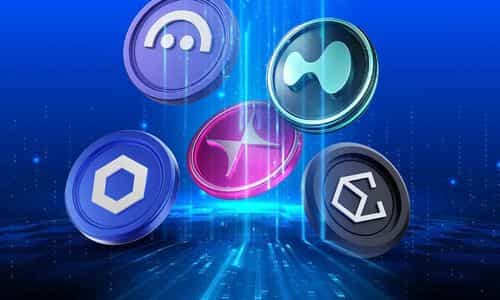Understanding blockchain layers: L1 vs L2 solutions


As blockchain networks grow, scalability becomes a key challenge. To address this, two primary blockchain layers have emerged: Layer 1 (L1) and Layer 2 (L2). Layer 1 serves as the base infrastructure where transactions are validated and secured, while Layer 2 solutions build on L1 to enhance scalability, reduce costs, and increase transaction speeds. This article explores the differences between L1 and L2, how they work together, and the future trends in blockchain scaling.
Defining blockchain layers: L1 and L2 overview
Blockchain technology is gaining traction as a secure, transparent way to host transactions, but as adoption increases, scalability and transaction costs have become critical challenges. To address these issues, Layer 1 (L1) and Layer 2 (L2) solutions have been developed. L1 is the foundational layer, such as Bitcoin and Ethereum, where transactions are validated and secured. L2, on the other hand, is built on top of L1 to improve the scalability of blockchain networks by making transactions faster and more cost-efficient. The two layers serve distinct functions, with L1 focusing on security and decentralization, while L2 focuses on scalability, offloading the transactional burden from L1.
Layer 1 (L1): The foundation of blockchain
L1 represents the base layer of a blockchain network where transactions are validated and consensus is achieved. It includes prominent examples like Bitcoin, which uses Proof of Work (PoW), and Ethereum, which has transitioned to Proof of Stake (PoS) with its Ethereum 2.0 upgrade. L1 is essential for ensuring the security and decentralization of the blockchain. Consensus mechanisms, such as PoW and PoS, are used to validate transactions and secure the network. In the case of Bitcoin, miners solve complex cryptographic problems to validate transactions, while Ethereum’s Ethereum 2.0 transition uses validators who stake tokens to participate in the consensus process. Ethereum’s Merge in 2022 combined the Beacon Chain with its mainnet, setting the stage for scalability improvements.
Layer 2 (L2): Scaling solutions for blockchain networks
L2 solutions are designed to address scalability issues by processing transactions off-chain and periodically settling on the main blockchain (L1). These solutions reduce congestion and transaction fees while improving the speed of processing. L2 technologies include state channels, sidechains, and rollups.
Key differences between L1 and L2 solutions
L1 and L2 differ in terms of scalability, security, decentralization, and complexity.
How L1 and L2 solutions work together?
L2 solutions complement L1 by offloading transactional processing, thereby reducing congestion and lowering costs while still leveraging the inherent security of L1. Rollups, for instance, bundle transactions off-chain and submit a cryptographic proof to L1 for validation. Rollups, such as zkSync for Ethereum, allow transactions to occur off-chain with only the updated state frequently recorded on L1 with light zero-knowledge proofs, ensuring security without the overhead of full transaction processing.
Interoperability between L1 and L2 technologies
Interoperability between L1 and L2 is achieved through bridges and aggregators, which enable the movement of assets between the layers. Initial bridges include Arbitrum's and Optimism's native bridges, as well as third-party options like Across and Stargate, which support multiple networks. For example, a withdrawal from Arbitrum may take up to seven days due to the challenge period associated with its Optimistic architecture in native bridges, while modern bridges offer faster transfers. On the other hand aggregators like Rango enable interoperability between any EVM and non-EVM blockchains with best possible bridges.
The future of blockchain scaling: Trends in L1 and L2 solutions
Looking ahead, blockchain scalability will continue to grow with both L1 and L2 advancements. For L1, the introduction of sharding will improve Ethereum scalability, enabling it to handle thousands of transactions per second. Additionally, Layer 3 solutions, built on L2, are emerging to cater to specific use cases. On the L2 front, Zero-Knowledge Rollups (zk-rollups) are gaining popularity for their speed and privacy benefits. Furthermore, cross-chain interoperability is becoming more critical, with various solutions working to enable simple communication between different blockchains.
Conclusion
Understanding L1 and L2 is vital for understanding the blockchain universe better. L1 provides security and decentralization, while L2 enhances scalability, as seen in reduced costs and faster transactions. Future trends suggest a multi-layered ecosystem, with aggregators like Rango exchange leveraging these advancements to offer users low-fee, fast trading across multiple layers and networks, enhancing accessibility and efficiency.
Frequently asked questions
Check out most commonly asked questions, addressed based on community needs. Can't find what you are looking for?
Contact us, our friendly support helps!
Which L2 solution has the lowest transaction fees?
Fees vary by network traffic and design. Generally, rollup solutions like zk-rollups or Optimistic Rollups like Arbitrum or Linea offer lower fees compared to sidechains.
Can I stake tokens directly on an L2 network to earn rewards?
Yes. Most L2s support staking features, letting users earn rewards. However, options differ by network—always check the network’s ecosystem.
Are bridging aggregators like Rango safe for cross-chain transfers?
Aggregators like Rango have multiple smart contract audits with underlying secure protocols and added security measures. It’s important to always use reputable services!





